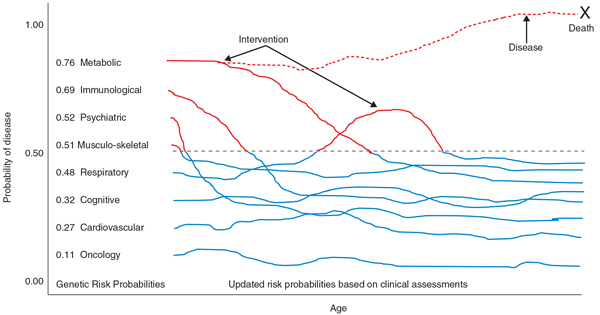Figure 1.

Schematic of the links between genetic risk and longitudinal clinical assessments for disease surveillance and health maintenance. In this scenario, the probabilities of disease based on genetic variants are calculated at a point in time for as many different conditions as possible, preferably at birth to facilitate lifetime health maintenance. Disease risks deemed high (such as with a probability over 0.5, denoted by the black dotted line) are noted and immediately focused on. Clinical measures are then obtained periodically to monitor disease and inform the calculation of a posterior probability of a disease manifesting itself given an individual's genetic predisposition (depicted as lines emanating from each disease category). Risks above the threshold for intervention are noted (red parts of lines). The graph also depicts a hypothetical setting (dashed red line) in which risk for metabolic disease is high, clinical measures indicate increased risk and an intervention is not undertaken, leading to disease and ultimately death from that disease.
